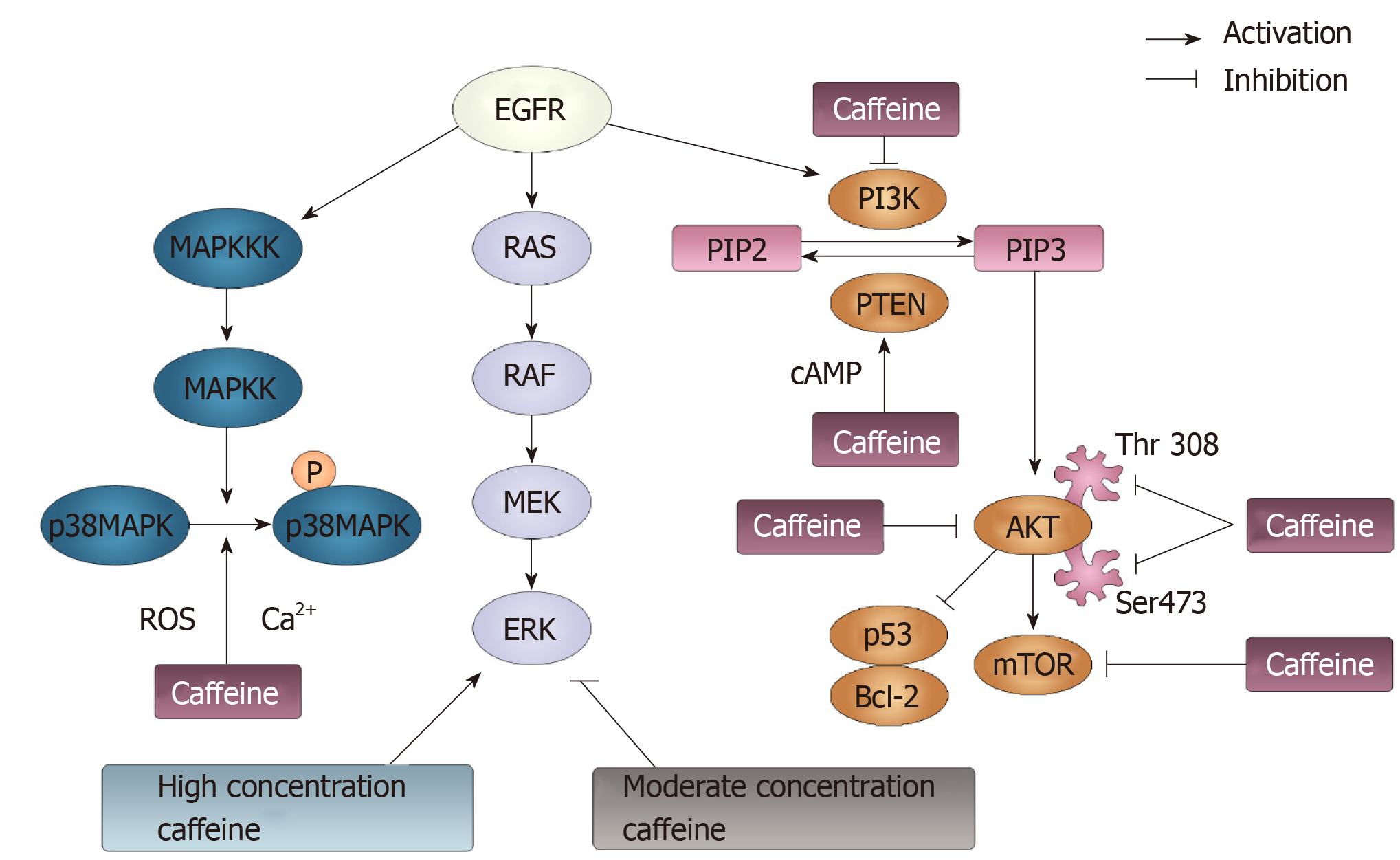Copyright
©The Author(s) 2020.
World J Gastrointest Oncol. Feb 15, 2020; 12(2): 149-172
Published online Feb 15, 2020. doi: 10.4251/wjgo.v12.i2.149
Published online Feb 15, 2020. doi: 10.4251/wjgo.v12.i2.149
Figure 7 Phosphoinositide-3-kinase, phosphatase and tensin homolog, p38 mitogen-activated protein kinase and RAS pathways modulated by caffeine.
Three signaling pathways can be initiated by epidermal growth factor receptor: p38 mitogen-activated protein kinase (MAPK), RAS/RAF/MEK/ERK and PI3K/AKT/ mTOR pathways. p38 MAPK can be phosphorylated following the activation of MAPK kinase kinases and MAPK kinases. Caffeine can inhibit the activation of p38 MAPK though modulating the Ca2+ concentration and reactive oxygen species generation. Additionally, caffeine can exert a dual function on ERK, the downstream factor of the RAS/RAF/MEK pathway. At a high concentration, caffeine activates the ERK pathway. At a moderate concentration, caffeine shows an inhibitory effect on the ERK pathway. PI3K can convert phosphatidylinositol-4-phosphate (PIP) 2 to PIP3, and PTEN can reverse this conversion. Caffeine can activate PTEN and inhibit PI3K, in which case PIP3 can be reduced and PIP2 can be increased. Then, PIP3 can activate AKT, through which p53 and Bcl-2 can be activated, and the mTOR pathway can be inhibited. Caffeine can inhibit the phosphorylation of AKT by suppressing its residues Thr308 and Ser473. Moreover, caffeine can directly inhibit mTOR pathways. EGFR: Epidermal growth factor receptor; ERK: Extracellular-signal regulated kinases; mTOR: Mammalian target of rapamycin; MAPK: Mitogen-activated protein kinase; MAPKK: MAPK kinases; MAPKKKs: MAPK kinase kinases; ROS: Reactive oxygen species; PI3K: Phosphoinositide-3-kinase; PIP: Phosphatidylinositol-4-phosphate; PTEN: Phosphatase and tensin homolog.
- Citation: Cui WQ, Wang ST, Pan D, Chang B, Sang LX. Caffeine and its main targets of colorectal cancer. World J Gastrointest Oncol 2020; 12(2): 149-172
- URL: https://www.wjgnet.com/1948-5204/full/v12/i2/149.htm
- DOI: https://dx.doi.org/10.4251/wjgo.v12.i2.149









